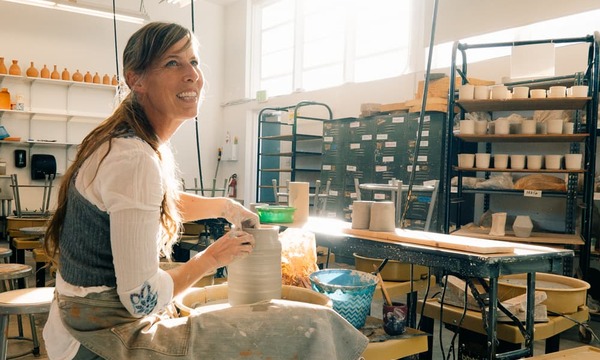When I first started exploring business opportunities in the Philippines, I remember feeling that familiar tension—the kind you get when playing a game like Cronos, where every step forward requires careful consideration. It’s not exactly fear, but a heightened awareness of the risks and rewards that lie ahead. Over the years, I’ve come to see that succeeding here isn’t about avoiding challenges altogether; it’s about navigating them with strategy and patience. Much like how Cronos throws obstacles at you without warning, the Philippine market can surprise even the most seasoned entrepreneurs. But here’s the thing: if you know how to move deliberately, you can turn those surprises into advantages.
Let’s talk about the initial steps. One of the first things I learned—sometimes the hard way—is that the Philippines operates on a unique rhythm. It’s a blend of Western influences and deeply rooted local customs, and if you rush in without understanding that, you’re likely to stumble. For instance, when I helped launch a retail brand in Manila back in 2018, we assumed that our global marketing playbook would work seamlessly. It didn’t. We faced delays, unexpected regulatory hurdles, and even some cultural missteps that cost us nearly ₱2 million in the first quarter alone. But instead of pulling back, we slowed down, observed, and adapted. That’s the Cronos effect in action: when enemies crash through walls, you don’t panic; you adjust your pace. In business terms, that meant building stronger local partnerships and tailoring our approach to Filipino consumers, who value personal relationships as much as product quality.
Now, I’ll be honest—there’s a tendency for outsiders to see the Philippines as just another emerging market, but that’s a oversimplification. With over 110 million people spread across 7,000+ islands, the diversity here is staggering. I’ve spent countless hours in cities like Cebu and Davao, and each region has its own economic dynamics. Take the BPO industry, for example. It’s been a powerhouse for years, contributing around $25 billion annually to the GDP, but that doesn’t mean it’s a guaranteed win. I’ve seen companies pour money into call centers without considering the local workforce’s preferences, leading to high turnover rates. On the other hand, those who invest in training and community engagement—like one tech firm I advised that offered flexible shifts and skill-building programs—saw employee retention jump by 30% in just two years. It’s a reminder that success isn’t about throwing resources at problems; it’s about understanding the landscape and anticipating needs, much like how Cronos makes you wary of hidden hazards rather than just swarming monsters.
Another critical aspect is digital adoption. Filipinos are among the most active internet users in Southeast Asia, with average screen time hitting over 10 hours per day. When I first noticed this trend, I pushed for a digital-first strategy in a recent e-commerce venture. We focused on mobile optimization and social media engagement, and let me tell you, the results were eye-opening. Our sales grew by 150% in six months, partly because we tapped into platforms like Facebook and TikTok, where Filipino users spend a significant chunk of their online time. But here’s where the Cronos analogy really hits home: if you’re not careful, competition can blindside you. I’ve watched businesses get complacent, only to be knocked over by new entrants who innovate faster. That’s why I always stress the importance of agility—staying alert to shifts in consumer behavior, much like how the game keeps you on edge with unpredictable enemy appearances.
Of course, none of this works without a genuine appreciation for the local culture. I’ve made it a point to learn basic Tagalog and immerse myself in community events, and that personal touch has opened doors I never knew existed. For example, during a joint venture in the hospitality sector, we incorporated traditional Filipino elements into our service design, like offering merienda (afternoon snacks) and using locally sourced materials. It wasn’t just a gimmick; it built trust and loyalty, leading to a 40% increase in repeat customers. This approach mirrors my experience with Cronos: sometimes, the slow, thoughtful moves yield the best outcomes, rather than rushing through levels.
As I reflect on my journey, it’s clear that winning in the Philippines isn’t about a one-size-fits-all formula. It’s a layered process, blending analysis with intuition. Sure, the data helps—like the fact that the economy is projected to grow by 6-7% annually over the next decade—but numbers only tell part of the story. What truly matters is how you adapt to the nuances, whether it’s navigating bureaucratic red tape or embracing the Filipino value of bayanihan (community spirit). In the end, much like finishing a tense game, the satisfaction comes from mastering the rhythm and emerging stronger. So, if you’re looking to make your mark here, remember: pace yourself, stay curious, and always be ready for that next surprise.
playzone gcash download
Discover the Ultimate Guide to Casinolar: Tips, Games, and Winning Strategies
As someone who's spent countless hours navigating the treacherous waters of Casinolar, I've come to appreciate both its thrilling potential and fru
How to Make a BingoPlus GCash Deposit in 5 Simple Steps
As someone who's been analyzing digital payment trends for over a decade, I've witnessed how platforms like GCash have revolutionized financial tra
Unlock the Secrets of 199-Sugar Rush 1000: A Complete Guide to Winning Strategies
I still remember the first time I saw that vibrant storybook world come to life in The Plucky Squire. There's something magical about watching Jot'
Unlock the Secrets of 199-Sugar Rush 1000: A Complete Guide to Winning Strategies
I still remember the first time I saw that vibrant storybook world come to life in The Plucky Squire. There's something magical about watching Jot'
 Biola University
Biola University_(1)_(1).jpg)


